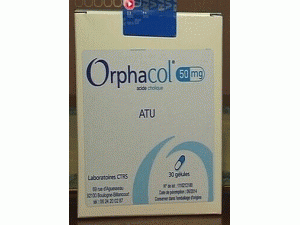塔格瑞斯,塔格瑞斯片Osimertinib (Tagrisso Tablets 80mg)
 药店国别:无
产地国家:美国
处方药:是
所属类别: 80毫克/片 30片/瓶
包装规格: 80毫克/片 30片/瓶
计价单位:瓶
生产厂家中文参考译名:无
生产厂家英文名:AstraZeneca
原产地英文商品名:Tagrisso Tablets 80mg/tab 30tabs/bottles
原产地英文药品名:osimertinib
中文参考商品译名:Tagrisso片 80毫克/片 30片/瓶
中文参考药品译名:塔格瑞斯
曾用名:无
药店国别:无
产地国家:美国
处方药:是
所属类别: 80毫克/片 30片/瓶
包装规格: 80毫克/片 30片/瓶
计价单位:瓶
生产厂家中文参考译名:无
生产厂家英文名:AstraZeneca
原产地英文商品名:Tagrisso Tablets 80mg/tab 30tabs/bottles
原产地英文药品名:osimertinib
中文参考商品译名:Tagrisso片 80毫克/片 30片/瓶
中文参考药品译名:塔格瑞斯
曾用名:无
简介
近日,TAGRISSO(osimertinib/AZD9291)获美国FDA批准用于治疗突变阳性转移性非小细胞肺癌患者。TAGRISSO是唯一被批准用于转移性EGFR T790M突变阳性非小细胞肺癌患者的药物。该指征根据FDA的加速批准程序批准,基于肿瘤反应率和反应持续时间(DoR) 批准日期:2015年11月13日 公司:阿斯利康TAGRISSO(塔格瑞斯[osimertinib])片剂,用于口服 美国最初批准:2015年 最近的重大变化适应症和用法:4/2018 剂量和用法:4/2018 警告和注意事项:4/2018 作用机制 Osimertinib是表皮生长因子受体(EGFR)的激酶抑制剂,其与EGFR(T790M,L858R和外显子19缺失)的某些突变形式不可逆地结合,浓度比野生型低约9倍。在口服奥西替尼后,在血浆中已经鉴定出两种药理活性代谢物(AZ7550和AZ5104,其在亲本的约10%循环),具有与奥西司特相似的抑制特征。 AZ7550显示出与osimertinib相似的效力,而AZ5104显示出更强的针对外显子19缺失和T790M突变体(约8倍)和野生型(约15倍)EGFR的效力。在体外,osimertinib还在临床相关浓度下抑制HER2,HER3,HER4,ACK1和BLK的活性。 在培养细胞和动物肿瘤植入模型中,osimertinib对携带EGFR突变(T790M / L858R,L858R,T790M /外显子19缺失和外显子19缺失)的NSCLC系具有抗肿瘤活性,并且在较小程度上具有野生型EGFR扩增。 Osimertinib在多种动物物种(猴,大鼠和小鼠)中分布到大脑,口服给药后脑与血浆AUC比率约为2。 这些数据与临床前突变体-EGFR颅内小鼠转移异种移植模型(PC9;外显子19缺失)中的奥西替尼与对照处理动物的肿瘤消退观察和存活率增加一致。 适应症和用法 TAGRISSO是一种激酶抑制剂•转移性NSCLC患者的一线治疗,其肿瘤具有表皮生长因子受体(EGFR)外显子19缺失或外显子21 L858R突变,如FDA批准的检测所检测到的。•通过FDA批准的测试检测转移性EGFR T790M突变阳性NSCLC患者,其疾病在EGFR TKI治疗之后或之后发展。 剂量和给药建议剂量:每日口服80毫克,含或不含食物。 剂量形式和强度片剂:80mg和40mg。 禁忌症:没有。 警告和注意事项 •间质性肺病(ILD)/肺炎:3.9%的患者发生。在诊断为ILD/肺炎的患者中永久停用TAGRISSO。 •QTc间隔延长:监测有QTc延长史或易患QTc延迟的患者的心电图和电解质,或正在服用已知可延长QTc间期的药物的患者。扣留然后以减少剂量重新启动或永久停止TAGRISSO。 •心肌病:2.6%的患者发生。进行心脏监测,包括心脏危险因素患者的左心室射血分数(LVEF)评估。 •角膜炎:及时将患有角膜炎症状和体征的患者转诊给眼科医生进行评估。 •胚胎 - 胎儿毒性:TAGRISSO可能导致胎儿伤害。建议女性对胎儿有潜在风险,并在TAGRISSO治疗期间使用有效避孕药,并在最后一次给药后6周。建议男性在最后一剂TAGRISSO后使用有效避孕药4个月。 不良反应 最常见的不良反应(≥20%)是腹泻,皮疹,皮肤干燥,指甲毒性,口腔炎,疲劳和食欲下降。 药物相互作用 强CYP3A诱导剂:尽可能避免。如果不可能,在接受强CYP3A4诱导剂的患者中,每天将TAGRISSO增加至160 mg。 用于特定人群哺乳期:不要母乳喂养。 包装提供/存储和处理 80毫克片剂:米色,椭圆形和双凸面片剂,一面标有“AZ 80”,另一面标有平面,有30瓶装(NDC 0310-1350-30)。40毫克片剂:米色,圆形和双凸面片剂,一面标有“AZ 40”,另一面标有平面,有30瓶(NDC 0310-1349-30)。将TAGRISSO瓶存放在25°C(77°F)。 允许偏移15-30°C(59-86°F)[见USP受控室温]。英文版说明
(AZD9291) Approved By The US FDA As Treatment For Patients With EGFR T790M Mutation-Positive Metastatic Non-Small Cell Lung Cancer2015 /US Food and Drug Administration (FDA) has approved TAGRISSO™ (osimertinib) (AZD9291) 80mg once-daily tablets for the treatment of patients with metastatic epidermal growth factor receptor (EGFR) T790M mutation-positive non-small cell lung cancer (NSCLC), as detected by an FDA-approved test, who have progressed on or after EGFR tyrosine kinase inhibitor (TKI) therapy.TAGRISSO is the only approved medicine indicated for patients with metastatic EGFR T790M mutation-positive non-small cell lung cancer. This indication is approved under the FDA's accelerated approval process based on tumor response rate and duration of response (DoR).TAGRISSO is an EGFR-TKI, a targeted cancer therapy, designed to inhibit both the activating, sensitizing mutations (EGFRm), and T790M, a genetic mutation responsible to EGFR-TKI treatment resistance. Nearly two-thirds of NSCLC patients who are EGFR mutation-positive and experience disease progression after being treated with an EGFR-TKI develop the T790M resistance mutation, for which there have been limited treatment options.Pascal Soriot, Chief Executive Officer, AstraZeneca, said: "The FDA approval of TAGRISSO marks an important milestone for lung cancer patients who urgently need new treatment options. We have built on our heritage in this area and acted on the breakthrough clinical evidence to ensure this next-generation medicine reaches patients in record time. As we advance our comprehensive lung cancer portfolio, we have the opportunity to treat greater numbers of patients across all stages of this disease through precision medicines, immunotherapies and novel combinations."Pasi A Jänne M.D., PhD, Director, Lowe Center for Thoracic Oncology at Dana-Farber Cancer Institute, Scientific Director, Belfer Center for Applied Cancer Science and Professor of Medicine, Harvard Medical School said: "In the AURA clinical studies, TAGRISSO has demonstrated compelling early efficacy and tolerability in patients with EGFRm T790M metastatic non-small cell lung cancer. This treatment has the potential to become the standard of care for patients living with EGFRm T790M non-small cell lung cancer. The accelerated approval of TAGRISSO highlights its clinical promise for a targeted group of patients and gives healthcare providers an important new option."AstraZeneca has collaborated with Roche to develop the cobas® EGFR Mutation Test v2 as the companion diagnostic for TAGRISSO. The cobas® EGFR Mutation Test v2 is intended to identify a range of EGFR mutations in patients with non-small cell lung cancer, including T790M.TAGRISSO was granted Fast Track, Breakthrough Therapy, Priority Review and Accelerated Approval status by the FDA. In Europe and Japan, TAGRISSO was granted Accelerated Assessment and Priority Review status respectively. Interactions with regulatory authorities in the rest of the world are ongoing.The FDA approval of TAGRISSO is based on data from the two AURA Phase II studies (AURA extension and AURA2) which demonstrated efficacy in 411 EGFRm T790M NSCLC patients that had progressed on or after an EGFR TKI. In those trials, overall objective response rate ((ORR) a measurement of tumor shrinkage) was 59% (95% CI: 54% to 64%). In a separate part of the AURA Study in 63 patients, ORR was 51% and median duration of response was 12.4 months.The TAGRISSO tolerability profile showed that no individual severe grade 3+ adverse events occurred at = 3.5%.The most common adverse events were generally mild to moderate and included diarrhea (42% all grades; 1.0% Grade 3/4), rash (41% all grades; 0.5% Grade 3/4), dry skin (31% all grades; 0% Grade 3/4), and nail toxicity (25% all grades; 0% Grade 3/4).Osimertinib (AZD9291) Development ProgramOsimertinib (AZD9291) is being studied in the confirmatory trial, AURA3, an open label, randomized Phase III study designed to assess the efficacy and safety of osimertinib (AZD9291) versus platinum-based doublet chemotherapy in patients with EGFR T790M positive, locally advanced, or metastatic NSCLC who have progressed following prior therapy with an EGFR-TKI. Osimertinib (AZD9291) is also being investigated in the adjuvant setting and in the metastatic first-line setting, including in patients with brain metastases, as well as in combination with other compounds.Important Safety Information•There are no contraindications for TAGRISSO•Interstitial Lung Disease (ILD)/Pneumonitis occurred in 3.3% and were fatal in 0.5% of 813 TAGRISSO patients. Withhold TAGRISSO and promptly investigate for ILD in any patient presenting with worsening of respiratory symptoms indicative of ILD (e.g., dyspnea, cough and fever). Permanently discontinue TAGRISSO if ILD is confirmed•QTc interval prolongation occurred in TAGRISSO patients. Of the 411 patients in two Phase II studies, one patient (0.2%) was found to have a QTc greater than 500 msec, and 11 patients (2.7%) had an increase from baseline QTc greater than 60 msec. Conduct periodic monitoring with ECGs and electrolytes in patients with congenital long QTc syndrome, congestive heart failure, electrolyte abnormalities, or those who are taking medications known to prolong the QTc interval. Permanently discontinue TAGRISSO in patients who develop QTc interval prolongation with signs/symptoms of life threatening arrhythmia•Cardiomyopathy occurred in 1.4% and were fatal in 0.2% of 813 TAGRISSO patients. Left Ventricular Ejection Fraction (LVEF) decline >10% and a drop to <50% occurred in 2.4% of (9/375) TAGRISSO patients. Assess LVEF before initiation and then at 3 month intervals of treatment. Withhold TAGRISSO if ejection fraction decreases by 10% from pretreatment values and is less than 50%. For symptomatic congestive heart failure or persistent asymptomatic LV dysfunction that does not resolve within 4 weeks, permanently discontinue TAGRISSO.•Advise pregnant women of the potential risk to a fetus. Advise females of reproductive potential to use effective contraception during TAGRISSO treatment and for 6 weeks after the final dose. Advise males with female partners of reproductive potential to use effective contraception for 4 months after the final dose.•The most common adverse reactions (>20%) observed in TAGRISSO patients were diarrhea (42%), rash (41%), dry skin (31%) and nail toxicity (25%).About Non-Small Cell Lung CancerLung cancer is the leading cause of cancer death among both men and women, accounting for about one-third of all cancer deaths, more than breast, prostate and colorectal cancers combined. Lung cancer has a five-year survival rate that is less than 20%. Approximately 85% of all lung cancers in the US are NSCLC; 10% to 15% of these are EGFR mutation-positive. Approximately two-thirds of patients treated with EGFR TKI therapy will acquire resistance related to the T790M mutation.About TAGRISSOTAGRISSO™ (osimertinib) (AZD9291) 80mg once-daily tablet is the first medicine indicated for the treatment of metastatic epidermal growth factor receptor (EGFR) T790M mutation-positive NSCLC, as detected by an FDA-approved test, who have progressed on or after EGFR TKI therapy.用药温馨提示:当您服用此药物时,需定期接受医疗专业人士的检查,以便随时针对其药效、副作用等情况进行监测。本网站所包含的信息旨在为患者提供帮助,不能代替医学建议和治疗。
药品价格查询,专业药品查询网站,药品说明书查询,药品比价 » 塔格瑞斯,塔格瑞斯片Osimertinib (Tagrisso Tablets 80mg)
药品价格查询,专业药品查询网站,药品说明书查询,药品比价 » 塔格瑞斯,塔格瑞斯片Osimertinib (Tagrisso Tablets 80mg)





